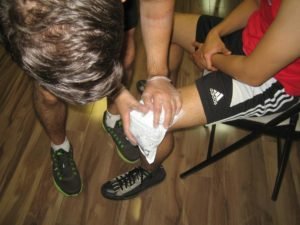The knee is comprised of four types of ligaments – anterior cruciate ligament, medial collateral ligament, posterior cruciate ligament as well as the lateral collateral ligament. These cruciate ligaments are situated below the middle of the knee and responsible for controlling the onward and to the rear motion of the shin when performing daily activities or sports. Both the medial and lateral collateral are responsible for regulating the steadiness of the interior and external knee correspondingly. Understandably, if these knee ligaments are injured in one way or another, it can affect your daily activities.
A torn knee ligament such as the anterior cruciate ligament is considered one of the most common injuries to the knee. The ACL is likely to be torn during quick everyday actions or sports that involve a lot of abrupt movements particularly football or basketball. Additionally, women are at higher risk for tearing the ACL.
Symptoms of a torn knee ligament
If you suspect that an individual has a torn knee ligament, it does not necessarily cause pain but the following symptoms are present:
- Popping sound
- Swelling of the leg and tends to buckle under the weight of the body
- Stiffness
- Bruising
- Painful instability when walking
Once these symptoms are present, the individual has a torn knee ligament. A diagnosis can be determined by the doctor once the individual undergoes certain tests such as an X-ray, arthroscopy or CT scan.
Treatment for a torn knee ligament

If one of the knee ligaments is torn, take note that they cannot heal on their own due to the lack of blood supply. Instant relief is provided by the application of an ice pack or cold compress to minimize the swelling. If you want to learn the proper way of applying ice to injuries, click here. Even protective braces for the knee can be applied while the individual exercises in order to minimize the risk of agitation or further aggravating the injury.
Long-term relief is possible by strengthening the surrounding muscles. This will help make up for the instability of the knee ligament that is torn.
In some cases, surgical intervention is the best approach. Once a torn knee ligament is treated using the conservative measures, there is no guarantee of reliable reduction and fixation of the ends of the ligaments. Understandably, the healing process is faster and better when the apposition and fixation of the ligament ends were carried out surgically.
When to call a doctor
There are also cases in which the torn knee ligament is considered severe. It is important to call a doctor right away after the knee is injured in such cases. The application of ice and pressure can help minimize the pain and swelling temporarily but it is vital to have a diagnosis from a doctor before the individual can perform any physical activity or engage in any type of sports.
